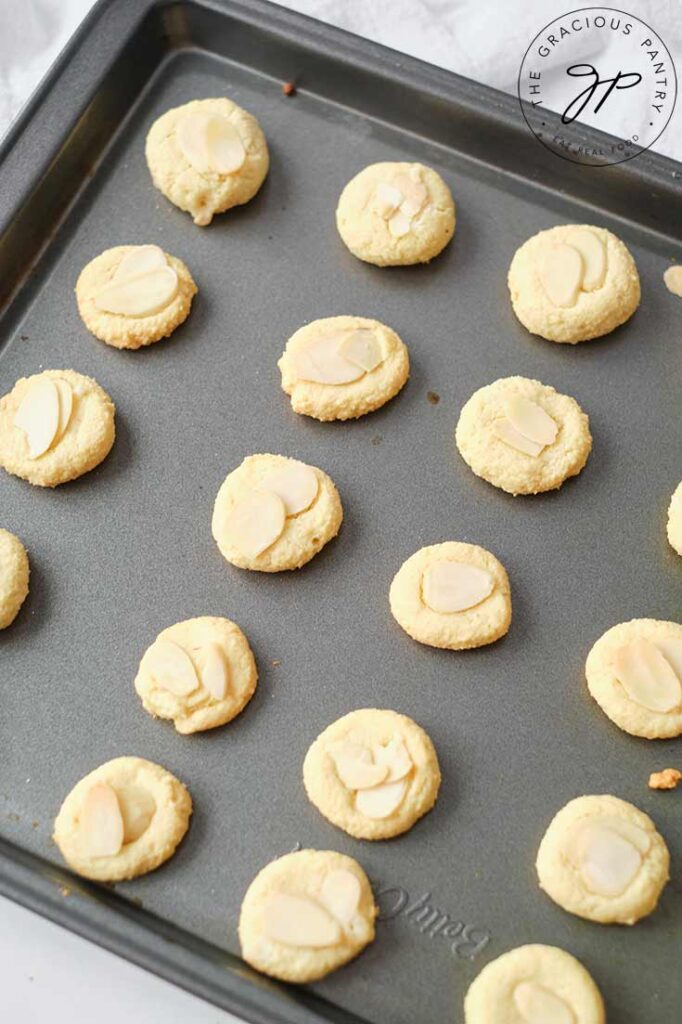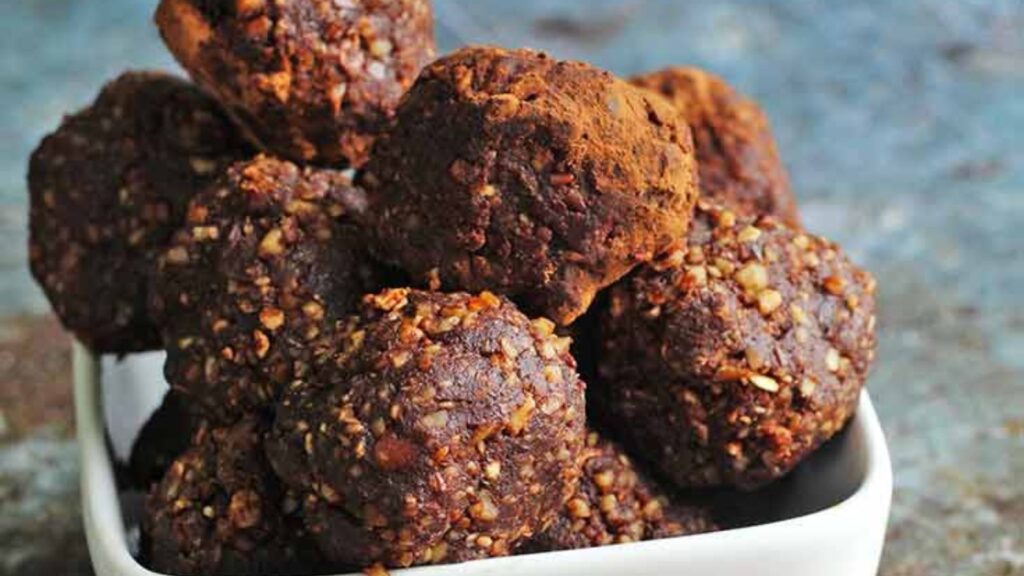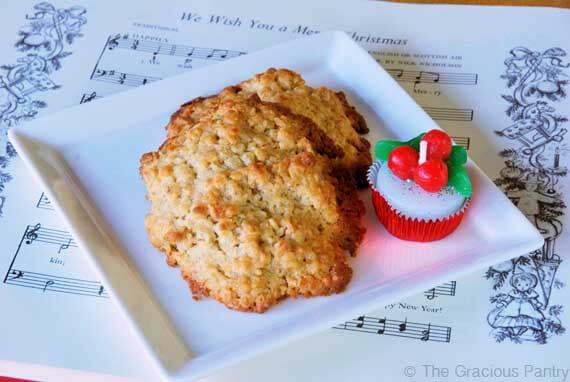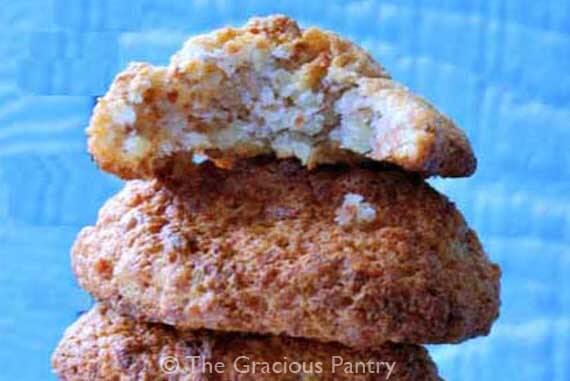10 Easy And Delicious Christmas Cookie Recipes
Delicious Christmas cookie recipes for Santa and his reindeer are just a click away.
The season is really ramping up and ovens everywhere are being preheated for baking family favorites for the season. This list of 10 Christmas cookie recipes is sure to please even the littlest in your family. Whether you want holiday spice or something more decadent for dessert, these ten cookies are perfect for Santa and are made with all-natural ingredients you’ll feel good about baking with.

What Is The Most Common Christmas Cookie?
In order, the most common (and popular) Christmas cookies in the States are Iced Sugar cookies, snowball cookies, peanut butter cookies, snickerdoodle cookies and finally, gingerbread cookies. If you’ve been into a bakery this season, you will probably agree with this list, even if your favorite is something different.
How Early To Bake Christmas Cookies?
Many Christmas cookies can be made up to 3 months in advance. This sounds like a lot, but it all depends on the particular cookies. In most cases, you can bake them ahead of time, and if you package them well, you can freeze them. Cookies made with honey tend to have a much longer shelf life thanks to the preserving qualities of honey. But that doesn’t mean you can leave them out on a shelf to turn moldy. They must be packed properly and stored properly to make them last. Remember, homemade Christmas cookies do not have the preservatives in them that the store-bought cookies have. So, while they will last, you have to take some precautions when storing them.

How To Store Christmas Cookies
There is a process for storing Christmas cookies properly. Don’t take shortcuts or skip steps. If you want them to last, you’ll need to take steps to ensure food safety and guard against spoilage.
1. Cooling Completely
- Ensure that the cookies are completely cooled before storing them to prevent moisture buildup inside the container, which can lead to sogginess.
2. Choosing the Right Container
- Airtight Containers: Use airtight containers like cookie tins, plastic containers with tight-sealing lids, or resealable plastic bags. These help in preserving freshness and prevent the cookies from becoming stale.
- Separate Layers: Layer cookies between sheets of parchment paper or wax paper to prevent them from sticking together.
3. Type-Based Storage
- Soft Cookies: Cookies like frosted or decorated soft cookies should be stored in a single layer to avoid damaging the decorations. Place parchment paper between the layers.
- Crunchy Cookies: Crunchy or crisp cookies can be stacked in layers, but it’s best to place a piece of parchment paper between the layers to maintain crispness.
4. Avoid Mixing Flavors
- Store different flavored cookies separately or in different containers to prevent flavors from mingling and altering the taste of each variety.
5. Moisture Control
- Avoid Moisture: Keep moisture away from cookies to maintain their texture. If the cookies become soft, you can crisp them up by placing them in a preheated oven for a few minutes.
- Silica Gel Packs: If storing for an extended period, you might consider adding silica gel packs to absorb excess moisture, especially in humid climates.
6. Storage Location
- Room Temperature: Some cookies can be stored at room temperature in a cool, dry place away from direct sunlight.
- Refrigeration (If Necessary): Some cookies, especially those with perishable fillings or toppings like cream or custard, may need refrigeration. Always refer to the specific recipe for guidance.
- Freezing (Optional): Many cookies freeze well. Place them in a freezer-safe container or bag with proper labeling indicating the type and date. Thaw cookies at room temperature before serving.
7. Checking Periodically
- Periodically check stored cookies for any signs of spoilage, especially if they’ve been stored for an extended period.
8. Duration of Storage
- Short-term Storage: Homemade cookies can typically be stored at room temperature for up to 1-2 weeks, depending on the type.
- Long-term Storage: If properly stored in airtight containers, some cookies can last for several weeks or even months. Always check for freshness before serving.
9. Rejuvenating Stale Cookies
- If cookies lose their freshness or become slightly stale, you can freshen them by placing a slice of bread in the container overnight. The cookies will absorb moisture from the bread, becoming softer and fresher.
10. Labeling
- Label containers or bags with the type of cookies and the date of storage for easy identification.

How To Make Christmas Cookies
While the exact process will, of course, depend on your cookies, here is a general outline for how to make Christmas cookies.
1. Gather Ingredients
- List of ingredients:
- Flour, sweetener, butter, eggs, vanilla extract, baking powder, salt, etc.
- Optional: Chocolate chips, sprinkles, nuts, etc. for variations.
2. Preparation
- Preheat Oven:
- Set the oven to the required temperature (usually specified in the recipe).
- Prepare Baking Sheets:
- Line baking sheets with parchment paper or grease them lightly.
- Bring Ingredients to Room Temperature:
- This ensures even mixing and better consistency.
3. Mixing
- Creaming Butter and Sugar:
- Beat the butter and sugar together until light and fluffy.
- Adding Eggs and Flavorings:
- Beat in eggs one at a time, then add vanilla extract or other flavorings.
- Combining Dry Ingredients:
- In a separate bowl, sift or whisk together flour, baking powder, salt, etc.
- Gradually Add Dry Ingredients to Wet Mixture:
- Mix until just combined. Be careful not to overmix the dough.
4. Rolling and Shaping
- Chilling Dough (If Required):
- Some recipes may recommend chilling the dough before rolling it out.
- Rolling Out Dough:
- On a floured surface, roll the dough to the desired thickness.
- Using Cookie Cutters:
- Cut out shapes and transfer them to the prepared baking sheets.
5. Baking
- Bake Cookies:
- Follow the recommended baking time and temperature.
- Rotate baking sheets halfway through baking for even cooking.
- Cooling:
- Let the cookies cool on the baking sheet for a few minutes before transferring to a wire rack to cool completely.
6. Decoration (Optional)
- Icing or Frosting:
- Prepare icing or frosting, and decorate the cookies once they’re completely cooled.
- Sprinkles, Chocolate Drizzle, or Other Toppings:
- Add any desired toppings or decorations.
7. Storage
- Storing Cookies:
- Once decorated or cooled, store the cookies in an airtight container at room temperature or in the fridge, depending on the recipe.

What Basic Ingredients Should You Keep In Your Pantry For Baking Cookies?
While this will vary based on the cookies you want to make, for the most part, there are always basics you can make sure you keep on hand so it’s easy to bake cookies spur of the moment.
- Flour – All-purpose flour is versatile and used in many cookie recipes. You might also consider having whole wheat flour or specialty flours for variety.
- Granulated Sweetener – Sugar is a staple for most cookie recipes. For healthier cookies, you’ll want to keep sweeteners on hand such as Sucanat, coconut sugar, date sugar, or monk fruit.
- Liquid Sweetener – Keep both honey and maple syrup (the real stuff) on hand.
- Butter: Unsalted butter is commonly used in baking. It’s preferable to have it at room temperature for easier creaming with sugar.
- Eggs – Large eggs serve as binders and add moisture to cookie dough.
- Baking Powder and Baking Soda – These leavening agents help cookies rise and become fluffy or spread, depending on the recipe.
- Vanilla Extract – A universal flavor enhancer in cookie recipes, adding depth to the taste.
- Salt – Enhances flavors in cookies and balances sweetness.
- Chocolate Chips or Chunks – Semi-sweet, milk, dark, or white chocolate chips are essential for chocolate chip cookies. Other variations include nuts, dried fruits, or toffee bits.
- Cocoa Powder – Essential for chocolate-based cookie recipes.
- Shortening or Oil – Some recipes might call for vegetable oil or shortening as an alternative to butter.
- Baking Chocolate – Solid chocolate bars or blocks used for melting and incorporating into cookie dough for a more intense chocolate flavor.
- Nuts – Commonly used nuts include chopped walnuts, pecans, almonds, or hazelnuts for added texture and flavor.
- Extracts and Spices – Aside from vanilla extract, consider having other extracts like almond, lemon, or peppermint. Spices such as cinnamon, nutmeg, ginger, and cloves add depth to holiday-themed cookies.
- Decorative Toppings (Optional) – Sprinkles, colored sugar, frosting, icing, or edible glitter for decorating cookies.
- Cornstarch or Baking Aids – Cornstarch can be used in some recipes to produce softer cookies. Other baking aids like cream of tartar may be needed for specific recipes.
Other Odds And Ends
Here are a few other random things to keep on hand:
- Cinnamon-sugar
- Cream cheese
- Various types of candy (these can be homemade; they don’t have to be unhealthy)
- Raspberry jam
- Lemon juice

Tips for Giving Cookies as Christmas Gifts:
1. Choose the Right Cookies
- Consider Preferences: Choose cookies that are generally liked and have wide appeal, such as classic chocolate chip, sugar cookies, gingerbread, or shortbread.
- Texture: Texture plays a big part in what people enjoy about cookies. Some want every bite to be soft like cake, while others enjoy a chewy texture. Kids and adults often enjoy opposite textures, so it’s worth considering the mouth texture of your finished cookies. Make them melt-in-your-mouth or crunchy with a cinnamon sugar coating. The choice is yours. Just consider the recipients before you start baking.
- Variety: Offering an assortment of different types of cookies adds a nice touch and lets recipients enjoy various flavors.
2. Packaging
- Decorative Containers: Use decorative tins, holiday-themed cookie boxes, mason jars, cellophane bags tied with ribbons, or decorative cookie bags for an appealing presentation.
- Layering and Separation: Layer cookies between wax paper or parchment paper to prevent them from sticking together. Separating different types of cookies in the packaging helps maintain flavors.
3. Labeling and Personalization
- Labels and Tags: Create or print labels or tags with the name of the cookies and any special ingredients or allergy information.
- Personalized Touch: Consider adding a personalized note or card to the gift, expressing cheery holiday wishes.
4. Freshness and Timing
- Timing is Key: Bake the cookies as close to the gifting date as possible to ensure maximum freshness. If baking in advance, store them properly to maintain freshness.
- Seal Airtight: Ensure the containers are airtight to keep the cookies fresh longer.
5. Presentation
- Arrange Thoughtfully: Pay attention to how you arrange the cookies in the container. Neatly arranged cookies are visually appealing and add to the gifting experience.
- Add Extras: Consider adding extra festive touches like holiday-themed napkins, ornaments, or small decorations alongside the cookies.
6. Consider Dietary Restrictions
- Ask About Preferences: If you’re aware of any dietary restrictions or allergies, ensure your cookie selection accommodates those needs.
- Offer Alternatives: If you’re unsure of dietary preferences, consider offering a variety that includes gluten-free, vegan, or nut-free options. Just be sure to prepare and package them separately to avoid cross-contamination.
7. Transportation
- Secure Packaging: If shipping cookies, ensure the packaging is secure to prevent breakage or damage during transit. Use cushioning materials like bubble wrap or packing peanuts.
8. Include Recipe Cards (Optional)
- Share the Joy: Include a recipe card or printout of the cookie recipes for recipients who may want to recreate the treats themselves.
9. Share with Love and Warmth
- Handwritten Notes: Adding a handwritten note expressing your thoughts and best wishes adds a personal and heartfelt touch to your gift.
10. Enjoy the Moment
- Spread Cheer: Enjoy the process of giving. The act of gifting homemade cookies is as rewarding as it is for the recipients to receive them.

Tips for Shipping Homemade Christmas Cookies:
1. Choose Sturdy Cookies
- Select cookies that are sturdy and less prone to crumbling or breaking during transit. Options like biscotti, shortbread, gingerbread, or sturdy drop cookies are good choices.
2. Packaging
- Airtight Containers: Use airtight containers like cookie tins, plastic containers, or resealable bags.
- Layering and Separation: Place cookies in a single layer, separated by parchment paper or wax paper, to prevent sticking or breakage.
- Cushioning Material: Add cushioning material like bubble wrap or tissue paper to fill any empty spaces in the container and prevent movement.
3. Choose the Right Shipping Box
- Use a sturdy shipping box that allows enough space around the containers for cushioning materials but is snug enough to prevent shifting.
4. Packaging the Shipping Box
- Layering and Padding: Place a layer of cushioning material at the bottom of the shipping box. Arrange the containers of cookies in the box, ensuring they fit snugly and won’t move during transit.
- Fill Empty Spaces: Fill any remaining spaces with more cushioning material to prevent shifting or breakage.
5. Seal the Box Securely
- Use strong packing tape to seal the box securely, ensuring it won’t open during transit.
6. Shipping Methods
- Priority Shipping: Choose expedited shipping methods to minimize transit time and reduce the chances of cookies getting stale or damaged.
- Timing is Key: Ship closer to the expected arrival date to ensure cookies stay fresh upon arrival.
7. Consider Weather Conditions
- Temperature Sensitivity: Avoid shipping cookies during extreme weather conditions (especially heat), as it can affect the quality of the cookies.
- Use Insulation: If shipping during warmer weather, consider using insulated packaging or ice packs to keep the cookies cool.
8. Labeling
- Clearly label the package as “Fragile” and “Perishable” to alert handlers to handle it with care and potentially expedite its delivery.
9. Tracking and Insurance
- Choose a shipping service that offers tracking and insurance for the package. This way, you can monitor its progress and have coverage in case of loss or damage.
10. Notify the Recipient
- Inform the recipient about the expected delivery date and time to ensure someone is available to receive the package and prevent cookies from sitting outside for an extended period.
11. Follow Up
- After the package has been delivered, follow up with the recipient to ensure the cookies arrived safely and in good condition.
10 Christmas Cookie Recipes To Try This Season
1. Whole Wheat Cutout Cookies

Cut-out cookies are a staple during the holidays. Also referred to simply as Christmas cookies or sugar cookies, you can’t walk into a single bakery this time of year without finding a beautiful batch of these Christmas cookies staring back at you from the display case. Whether you call these cutout cookies or sugar cookies, they are a quintessential part of our holiday season.
2. Pfeffernusse Cookies

If you love gingerbread cookies, you will love Pfeffernusse cookies. These delicious German Christmas cookies are slightly spicy and filled with traditional German holiday flavors.
3. Peanut Butter Cookies

This time of year, it’s so easy to fall off track with our eating plans. Holiday parties, big dinners, and treats everywhere we go seem to attempt to sabotage us at every turn. But these peanut butter cookies can satisfy both your taste buds and your eating plan.
4. Easy Snickerdoodles

This easy Snickerdoodle recipe is simple to put together and is a wonderfully delicious replacement for the processed, store-bought version.
5. Gingerbread Cookies

These healthy gingerbread cookies are an extra special treat this holiday season. They’re easy to make and fun to decorate.
6. Thumbprint Cookies

These healthy thumbprint cookies are one of the many wonderful cookie recipes I baked with the family I stayed with in Germany when I was eighteen.
7. German Almond Horns (Mandelhörnchen)

I make this German almond horns recipe every year for Christmas. For me, these Christmas cookies have a personal history. Wonderful memories I love to relive each year, of my time living in Germany.
8. Rum Balls

This rum balls recipe is a healthier twist on these delicious classics, but that doesn’t make them any less wonderful!
9. German Oatmeal Cookies

This oatmeal cookie recipe is one I learned to make when I lived in Germany. They are slightly different from the American version, but equally good if not better! My holiday season wouldn’t be complete without them.
10. Almond Honey Cookies

Almond Honey Cookies are light, delicious cookies that are flourless, gluten-free, and vegetarian. These soft cookies are not only healthy and delicious but also perfect for anyone who suffers from allergies or intolerance. They are a perfect holiday treat!
Other Types Of Christmas Cookies
There are so many holiday cookies you can make this time of year. From Italian 7-layer bars to molasses cookies, coconut macaroons, ginger cookies, shortbread cookies, peanut butter blossoms, and more. Even just a regular chocolate cookie will be appreciated as a gift this time of year. So get creative. Make big cookie platters to share with everyone! Your family and friends will love it.
So what do you think? Did I miss any good ones? Want me to take a crack at making your personal favorite healthier for the holidays? Drop a comment below, and I’ll give it a try!

